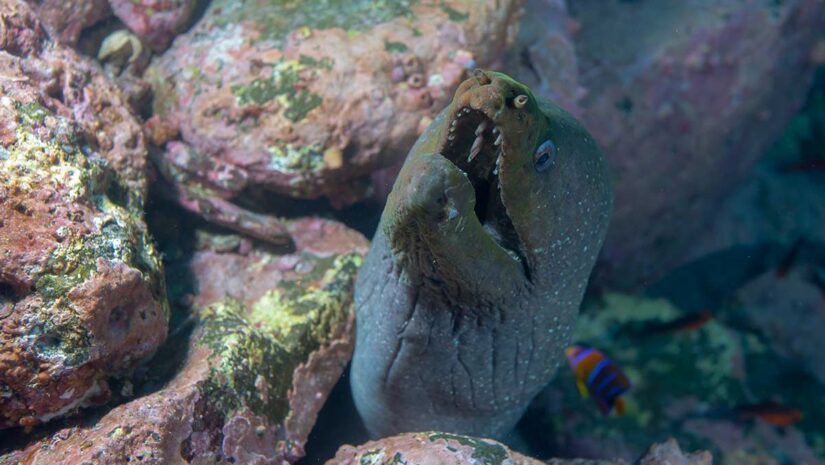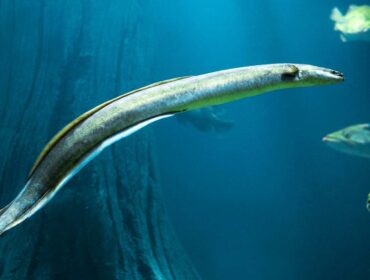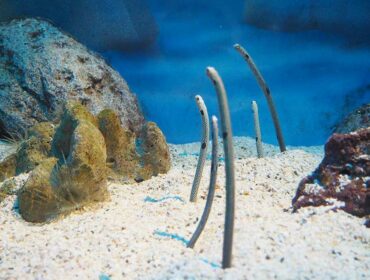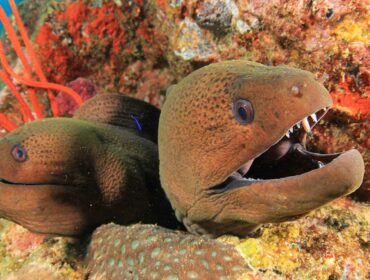Eels are some of the more interesting creatures of the sea, with about 800 marine eel species known to science. The moray and conger are common types of marine eels, in which many species exist with varying colors, sizes, diets, and habitats.
Eels are a fascinating group of fish known for their sleek bodies and snakelike appearance. There are numerous species of eels found across the globe, inhabiting both freshwater and saltwater environments. Here, we will explore some of the most notable types of eels.
Types of Eels
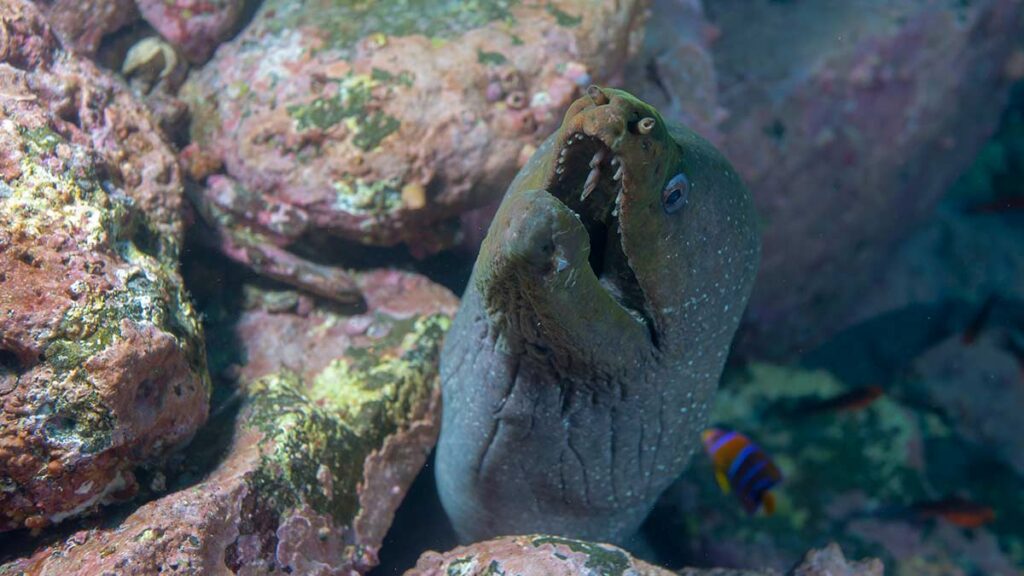
Snyder’s Moray
Snyder’s moray eel, also known as the finespot moray lives in the Pacific Ocean. It was discovered by Snyder in 1904 and is actually representative of several subspecies of eel.
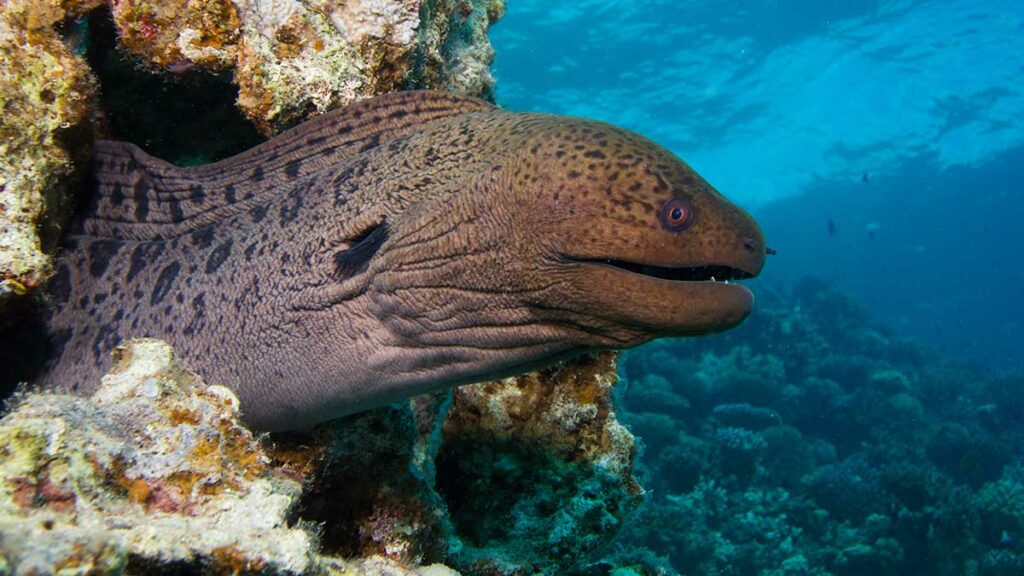
Giant Moray
The giant moray lives in the reefs of the Indo-Pacific region. Adults have black leopard-like specks and feed mainly on fish and crustaceans.
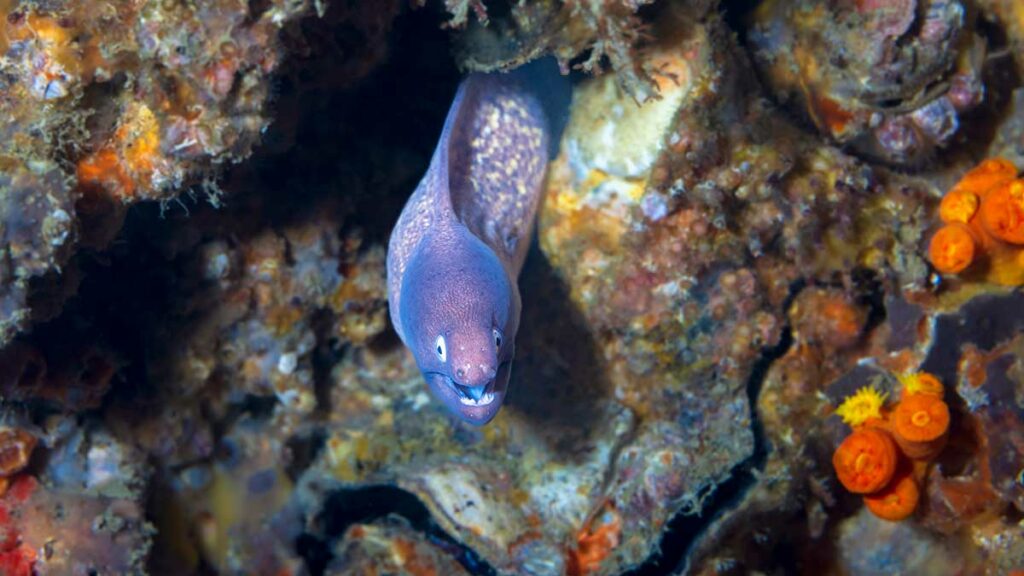
Slender Giant Moray
The slender giant moray eel is the longest species of moray at a recorded 13 feet. This species has a grayish-brown dorsal fin that fades to white on the ventral. These types of eels are found in the Indo-West Pacific Ocean.
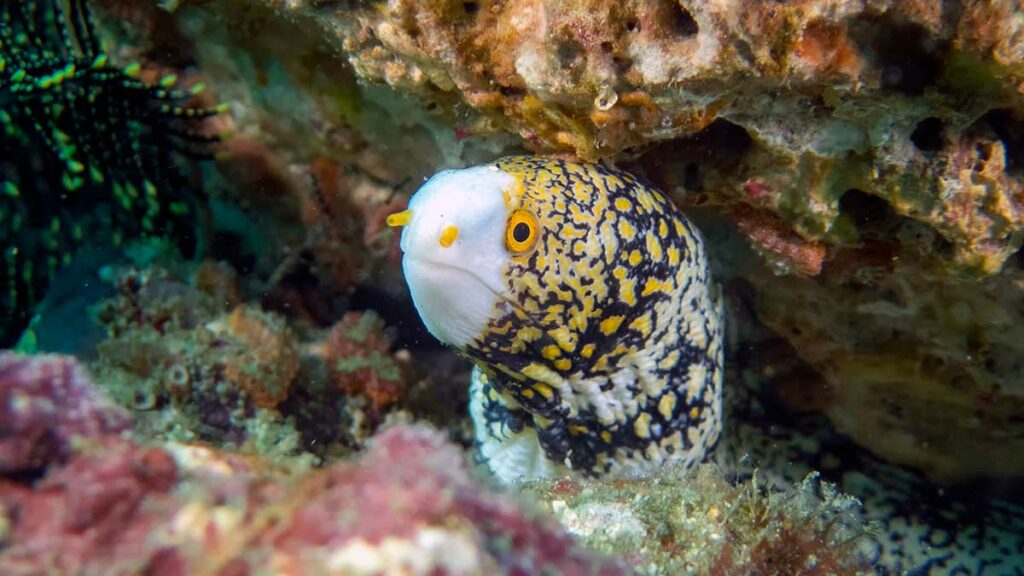
Snowflake Moray
The snowflake moray or clouded moray lives in the Indo-Pacific area and is typically about 20 inches in length. It lives at depths of 7 to 100 feet and feeds mostly on crustaceans and occasionally small fish.

Zebra Moray
The zebra moray gets its name from its black and white zebra-like stripes. These types of eels diet consists of crustaceans, mollusks, and sea urchins and it dwells amongst the reefs of the Indo-Pacific.
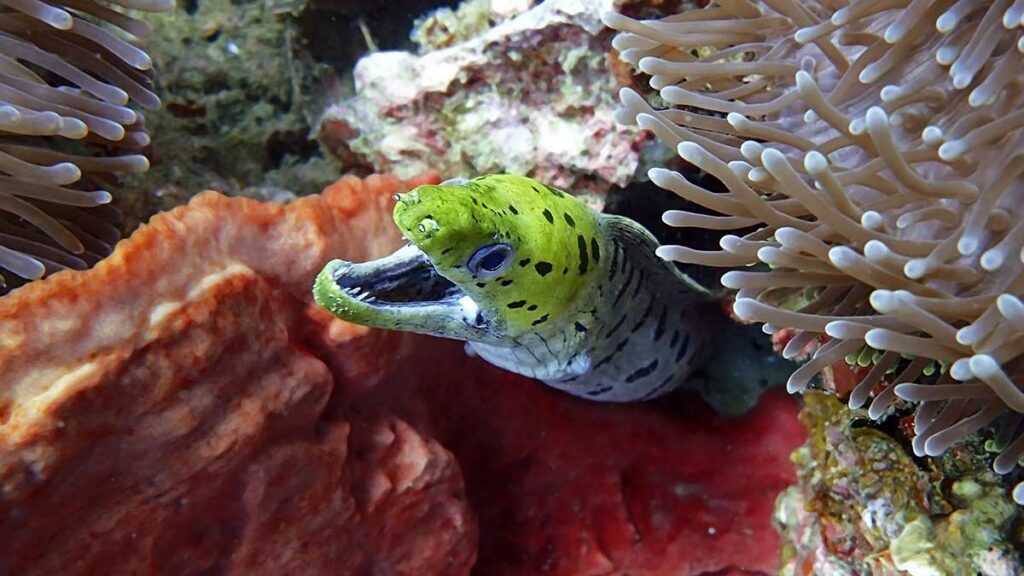
Fimbriated Moray
The Fimbriated moray can be found in the Indo-Pacific region as well. It can reach lengths of about 2.5 feet, has a yellowish-green body with black spots, and feeds mainly on small fish.
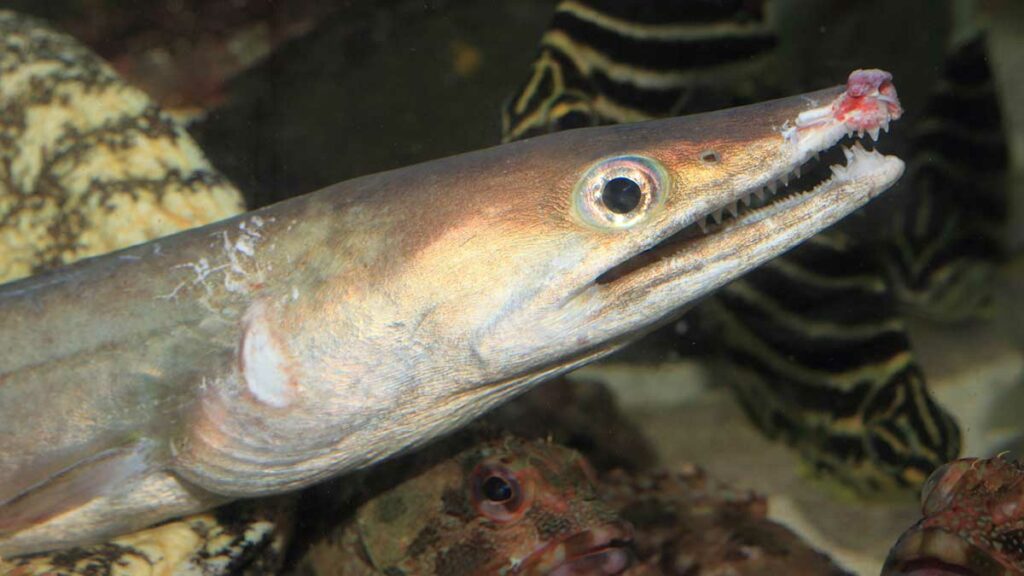
Whitespotted Conger
The whitespotted conger lives in the Northwest Pacific Ocean and can reach 36 inches in length.
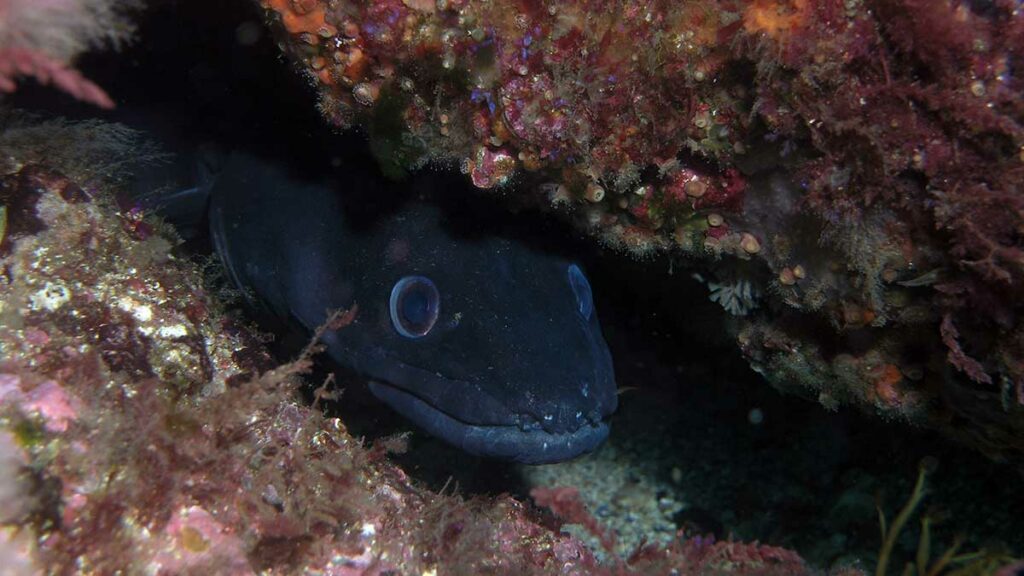
Grey Conger
The grey conger lives in the Atlantic Ocean. The common length is about 35 inches but can reach up to 62 inches. It feeds mostly on finfish.
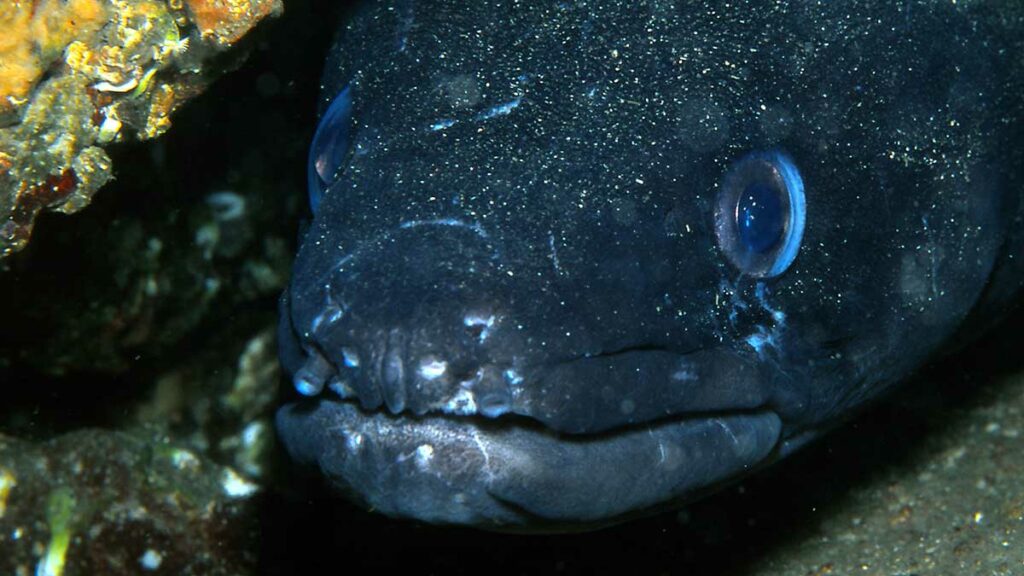
Longfin African Conger
The longfin African conger lives in the Indo-Pacific region. It lives at depths down to 262 feet and can reach lengths of up to 4.3 feet.
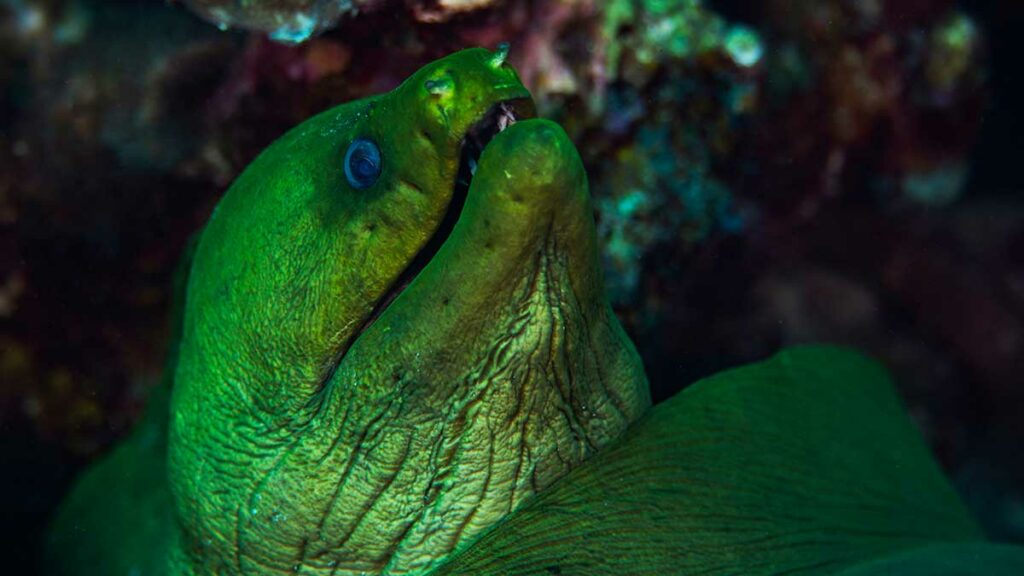
Beach Conger
And lastly, the beach conger lives in the Northwestern Pacific Ocean and reaches lengths of up to 4 feet.
Characteristics of Different Eels
While there is considerable variation among different eel species, there are some common characteristics that unite them:
- Elongated Body: Eels have elongated bodies that are cylindrical or snake-like in shape. This streamlined form allows them to navigate through water with ease and efficiency.
- Lack of Scales: Unlike most fish, eels lack scales, which gives their skin a smooth and slimy texture. This adaptation reduces friction and allows them to move smoothly through narrow crevices and burrows.
- Long Fins: Eels typically have long dorsal and anal fins that run along the length of their bodies. These fins aid in stability and maneuverability, enabling eels to make precise movements and swift turns.
- Jaw Structure: Eels have well-developed jaws equipped with sharp teeth. This enables them to seize and capture prey effectively. Some eels, such as moray eels, possess a second set of jaws called pharyngeal jaws that aid in swallowing large prey.
- No Pectoral Fins: Eels lack pectoral fins, which are commonly found in other fish species. This adaptation allows them to navigate through tight spaces, such as coral reefs or rocky crevices, where pectoral fins would be a hindrance.
- Catadromous or Anadromous Life Cycle: Many eel species exhibit a unique life cycle. They are either catadromous, migrating from freshwater to the ocean to spawn (e.g., American eels), or anadromous, migrating from the ocean to freshwater to reproduce (e.g., European eels). These migrations are remarkable feats of endurance and adaptation.
These shared characteristics contribute to the eel’s ability to thrive in a wide range of aquatic environments and make them captivating subjects of study and observation.
Conclusion
These are just a few examples of the diverse array of eel species found worldwide. Each type of eel possesses unique characteristics and adaptations that make them intriguing and ecologically significant creatures.

